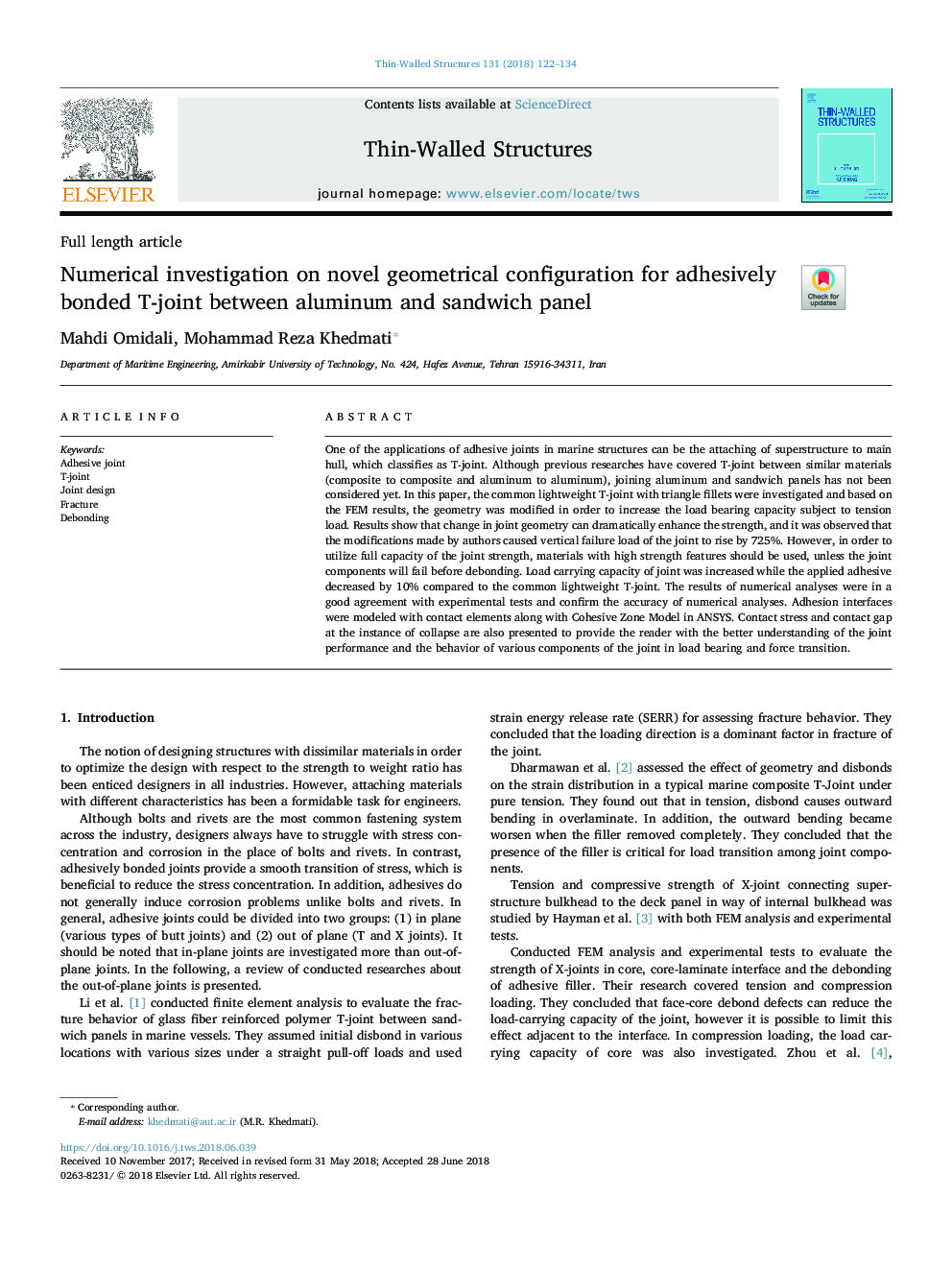| Article ID | Journal | Published Year | Pages | File Type |
|---|---|---|---|---|
| 6777047 | Thin-Walled Structures | 2018 | 13 Pages |
Abstract
One of the applications of adhesive joints in marine structures can be the attaching of superstructure to main hull, which classifies as T-joint. Although previous researches have covered T-joint between similar materials (composite to composite and aluminum to aluminum), joining aluminum and sandwich panels has not been considered yet. In this paper, the common lightweight T-joint with triangle fillets were investigated and based on the FEM results, the geometry was modified in order to increase the load bearing capacity subject to tension load. Results show that change in joint geometry can dramatically enhance the strength, and it was observed that the modifications made by authors caused vertical failure load of the joint to rise by 725%. However, in order to utilize full capacity of the joint strength, materials with high strength features should be used, unless the joint components will fail before debonding. Load carrying capacity of joint was increased while the applied adhesive decreased by 10% compared to the common lightweight T-joint. The results of numerical analyses were in a good agreement with experimental tests and confirm the accuracy of numerical analyses. Adhesion interfaces were modeled with contact elements along with Cohesive Zone Model in ANSYS. Contact stress and contact gap at the instance of collapse are also presented to provide the reader with the better understanding of the joint performance and the behavior of various components of the joint in load bearing and force transition.
Related Topics
Physical Sciences and Engineering
Engineering
Civil and Structural Engineering
Authors
Mahdi Omidali, Mohammad Reza Khedmati,
